#Chelicerates
Explore tagged Tumblr posts
Text

Chelicerate anatomy, showing where the "head" is in each.
From Storer, Usinger, Stebbins, and Nybakken (1972) General Zoology (5th Ed.).
548 notes
·
View notes
Text

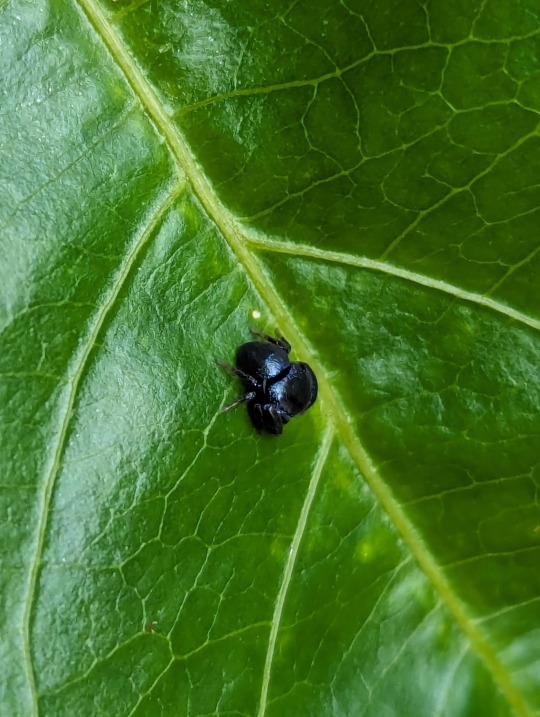



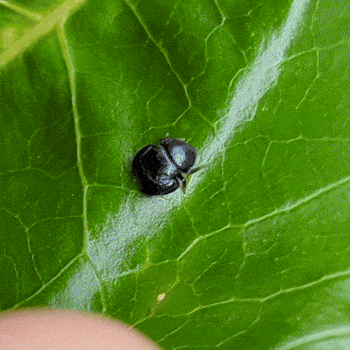
S. violacea, a very round species of jumping spider.
14/01/24 - Simaethula violacea
QLD:WET
#Simaethula violacea#gifs#Salticidae#Jumping Spiders#Araneae#spiders#spiders tw#Arachnida#Arachnids#Chelicerata#Chelicerates#arachnophobia tw#nature#invertebrates#invertblr#Arthropods#Arthropoda
284 notes
·
View notes
Text
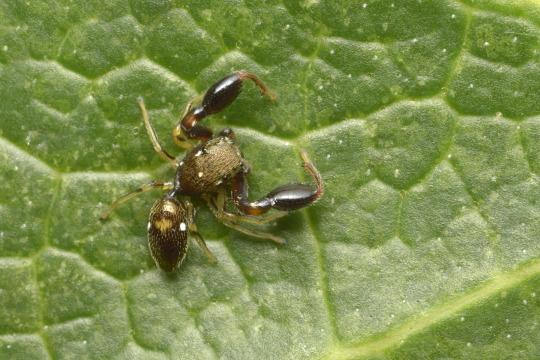
Marengo batheryensis
#Marengo batheryensis#wikipedia#wikipedia pictures#wikimedia commons#nature#animals#jumping spider#spiders#arachnids#animalia#arthropoda#Chelicerata#Chelicerates#Arachnida#Spider#Araneomorphae#true spiders#Labidognatha#Salticidae#Salticinae#india#entomology#zoology#bugblr#bug blogging#bug#bugs#bug posting#spiderblr#arachnology
24 notes
·
View notes
Text
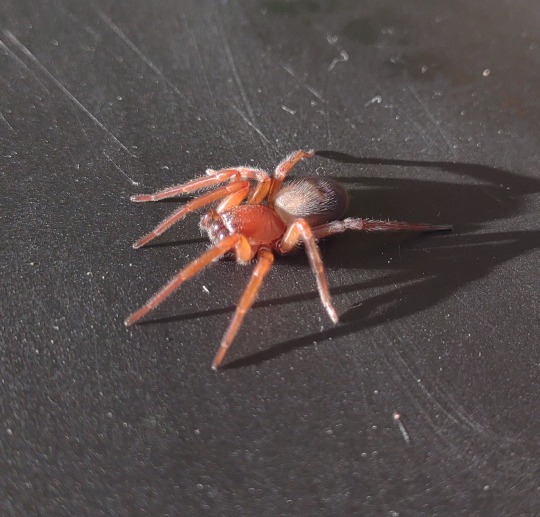
Beautiful women named callobuis severus are appearing in my sink
55 notes
·
View notes
Text
please send me characters (in an ask or message) to assign bugs/insects/other little dudes to!
(also include if you want any particular type)
#i will assign:#hexapods#myriapods#chelicerates#probably others but i can't think of any more#bugblr#insectblr#bugs#insects
12 notes
·
View notes
Text
I need to see a horseshoe crab in person please
#I have fulfilled my dreams of seeing humpback whales#and a giant isopod#ty monterey bay aquarium#also an American woodcock#now#I need to see horseshoe crab because WHAT#horseshoe crab#marine biology#chelicerates#2025 goal
5 notes
·
View notes
Text
anyways in an effort to come across as any amount of more normal, here's a harvestman i found on my house after i read twilight in the park today and immediately scooped up into my hand because i am prone to doing that when i see one of these guys within arm's reach
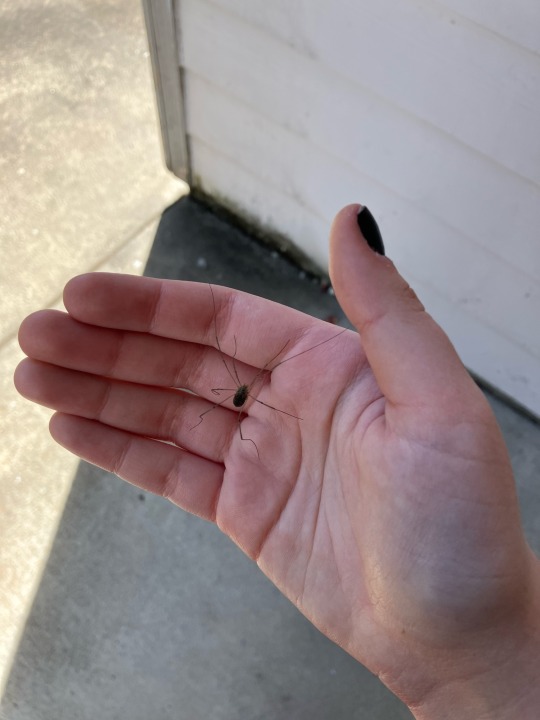
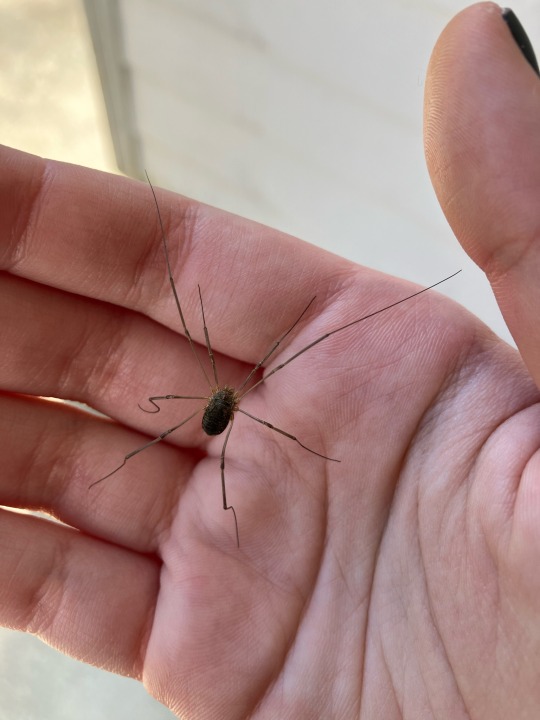
very polite and well-behaved, was content to just sit in my hand until i put it back :]]] don't think it was all that happy but it didn't freak out so i'm calling this experience a good one
3 notes
·
View notes
Text




If the Architects had started breeding chelicerates, they would have achieved different color variations of this shrimp. They'd also make it smaller x)
591 notes
·
View notes
Text

invertober day 25, indo-pacific horseshoe crab. ^_^
#horseshoe crab#chelicerate#arthropod#invertebrate#invertober#invertober2024#when i was drawing this it was vertical but as i was spinnin it around i realized it looked better as a horizontal banner look
876 notes
·
View notes
Text

The Kadez is a medium-sized river chelicerate, living in particularly pure, well-oxygenated streams. It tolerates very cold temperatures and as such is often found in mountain streams. They turn over pebbles with their legs in search of small invertebrates, roe, and other small prey to eat. It is quite an active creature, and in areas where they are abundant, they'll often come up onto land for other food sources. That said, they are quite skittish, and surprisingly fast -especially underwater-, so it isn't always easy to approach them.
#okali#fantasy#wandering okali#art#graphi's things#worldbuilding#species#speculative biology#specbio#xenobiology#xenofiction#fantasy biology#fantasy creature#fantasy art#fantasy worldbuilding#creature design#my first chelicerate! yes it is basically a horseshoe crab but listen. they are lovely and deserve at least one spot in okali#besides i like having designs very close to earth counterparts first before branching out into more fantasy stuff
933 notes
·
View notes
Text
#Paleostream 15/03/2025
here's today's #Paleostream sketches!!!
today we sketched Odobenocetops, Saurosuchus, Pterygotus, and Argentinadraco




#Paleostream#paleoart#digital art#paleontology#digital artwork#artists on tumblr#palaeoart#digital illustration#sciart#id in alt text#paleoblr#palaeoblr#sketch#sketches#mammal#cetacean#whale#whale art#extinct whale#Odobenocetops#pseudosuchian#archosaur#Saurosuchus#extinct invertebrate#invertebrate art#chelicerate#euypterid#Pterygotus#pterosaur#Argentinadraco
208 notes
·
View notes
Text




Probably my best artwork ever, two Asian forest scorpions locked in battle. The back is a mirror, which makes their jungle look larger. The plants aren't totally accurate to the biome due to the craft store being limited in their variety of native tropical-subtropical Asian plants
187 notes
·
View notes
Text


10/09/21 - Photos 1-2 - C. baehrae
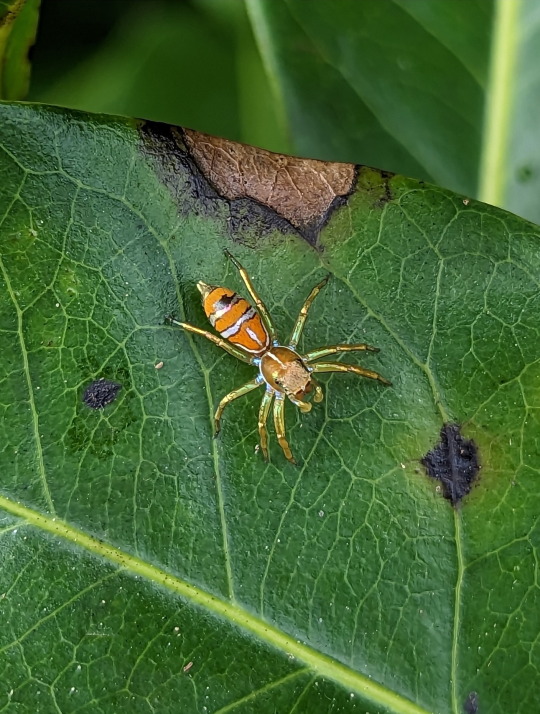

04/03/23 - Photos 3-4 - C. bitaeniata


24/11/23 - Photos 5-6 - C. thalassina


23/06/23 - Photos 7-8 - C. micarioides (different specimens)
So far, these are the four species of Cosmophasis I've come across. Lovely iridescent jumping spiders.
10/09/21-24/11/23 - Cosmophasis spp.
QLD:WET-BRB
#Cosmophasis#Cosmophasis baehrae#Baehr's Cosmophasis#Cosmophasis micarioides#North Queensland Jumping Spider#Cosmophasis thalassina#Sea-green Northern Jumper#Cosmophasis bitaeniata#Green Ant-hunter Spider#Jumping Spiders#Iridescent Jumping Spiders#Araneae#Spiders#Arachnida#Arachnids#Chelicerata#Chelicerates#arthropods#arthropoda#invertblr#invertebrates
208 notes
·
View notes
Text
Baby Horseshoe Crabs: these eggs contain tiny horseshoe crab embryos; the hatchlings emerge after 2-4 weeks, but it takes another 10 years for them to mature into adults

Horseshoe crab eggs are initially opaque, with a greenish-gray, blue, or pink appearance, but each egg becomes increasingly translucent as the embryo matures, providing a glimpse of the tiny horseshoe crab developing within.
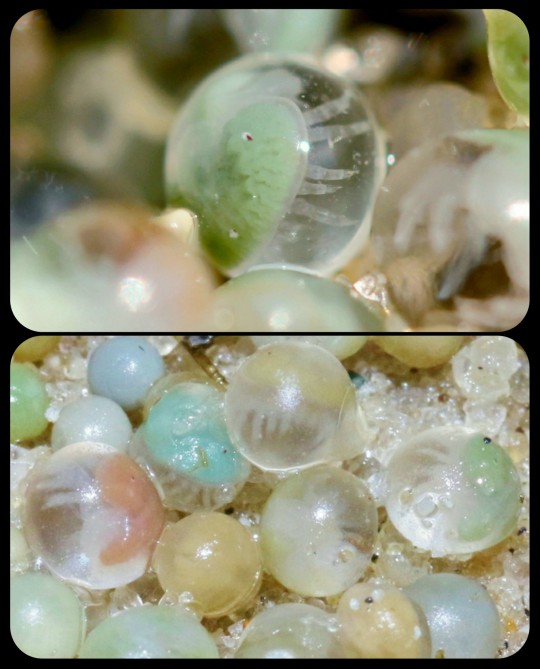
The legs become visible about five days after fertilization, and the embryo starts moving shortly thereafter, eventually flexing its legs and twirling its body around in the egg. It molts for the very first time after about a week; the embryo will shed its skin three more times as it develops, before it's finally ready to hatch.

The hatchlings usually emerge after 13-33 days. Their bodies are less than 1cm long, and they look just like miniature versions of the adult horseshoe crabs, except that they don't have tails/telsons and their exoskeletons are still soft and translucent. The larvae are sometimes described as "trilobite larvae."
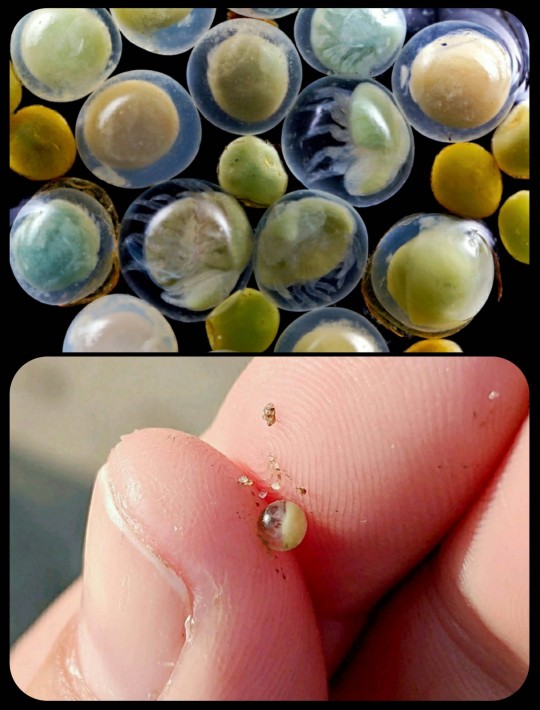
A horseshoe crab can lay more than 80,000 eggs per year, but very few of those eggs actually survive to adulthood. Most of the eggs are eaten or destroyed before they can even hatch, and many of the remaining larvae perish at some point during the 10 years that it takes for them to reach full maturity (i.e. the age at which they begin to reproduce).
Some wild horseshoe crabs can live to be more than 20 years old.
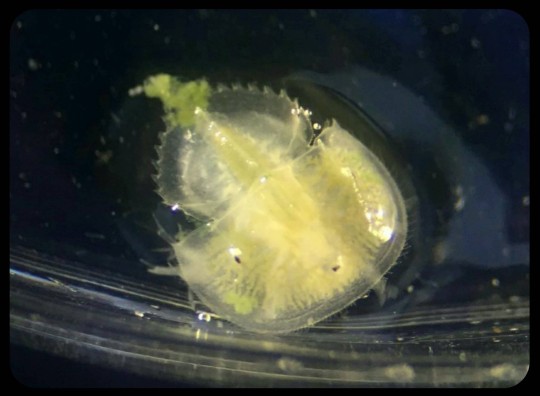
Horseshoe crabs have existed for at least 445 million years, which makes them about 200 million years older than dinosaurs. Their basic physiology has changed very little since then, and modern horseshoe crabs still look strikingly similar to their fossilized ancestors, which is why they're often described as "living fossils."
Despite their common name, horseshoe crabs are not true crabs. In fact, they're not even crustaceans; they belong to a completely different group of arthropods known as chelicerates, which are more closely related to spiders and scorpions than they are to crabs.
Sources & More Info:
Smithsonian National Zoo and Conservation Biology Institute: Horseshoe Crabs
PBS: Once a Spawn a Time: Horseshoe Crabs Mob the Beach (video)
Maryland Department of Natural Resources: Horseshoe Crab Life History
Current Zoology: Developmental Ecology of the American Horseshoe Crab, Limulus polyphemus
National Wildlife Federation: Horseshoe Crabs
U.S. Fish and Wildlife: The Horseshoe Crab (PDF)
iNaturalist: Atlantic Horseshoe Crab Eggs
#horseshoe crabs#arthropods#embryos#larvae#eggs#marine biology#living fossils#trilobite larvae#embryology#animal facts#chelicerate#adorable facehuggers
138 notes
·
View notes
Note
heteropoda davidbowie? one of my fav spiders :3c


#west malaysia#singapore#sumatra#southern thailand#david bowie spider#arthropoda#arthropods#chelicerata#chelicerate#arachnida#arachnid#arachnids#araneae#araneomorphae#sparassidae#huntsman spiders#animal polls#poll blog#my polls#animals#polls#tumblr polls#spider#spiders#invertebrate#invertebrates
72 notes
·
View notes
Text





Ferriclaw - Cassette Beasts
Subterranean spiders that wear rusted iron death masks as hats. They have white hair that hides one of their glowing red eyes. Very cool!
While they're metal-type monsters, they mostly use poison attacks. Their specialty is nullifying their foes' evasion with a sticky web to guarantee a hit from Stab in the Dark, a high-power, low-accuracy attack.
71 notes
·
View notes